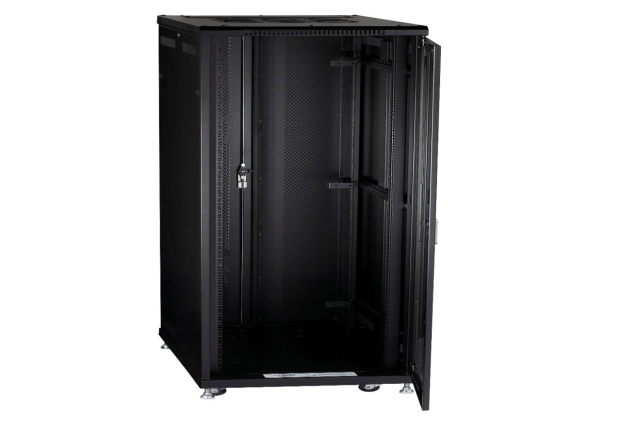A network cabinet or rack is a frame structure that is designed for housing rack-mount equipment servers. The cabinet or rack can also house routers, switches, audio, or video equipment, among other essentials. Most often, network racks or cabinets are utilized in data centers, in server rooms, audio installation centers, or video installation rooms as well. Some cabinets or racks, however, can be used in industries. When coming up with the design for a data center or a server room, a network cabinet or rack is among the first considerations that should be made. Manufacturers like Suntec-it make different types of network cabinet racks that you can choose form.
Types of network cabinets
- Rack-mount enclosure
Rackmount enclosure network cabinets are those with removable doors at the front and rear. The side panels and mounting rails in a rackmount enclosure network cabinet are also removable and adjustable, respectively. This type of network cabinet is suitable for applications where heavier equipment or server storage is needed.
- Open-frame racks
Contrary to the other types, this type of network rack cabinet does not feature any doors or sides. Aside from having open frames, this type of rack cabinet comes with rails for mounting. It is, therefore, suitable when it comes to applications where the racks do not have control over the flow of air. This type is also appropriate, where physical security is available.
- Wall-mount rack cabinets
The identifying feature for this type of network cabinet is that it is often attached to the wall. This feature helps to save on space as it can be fitted in an area where typical racks would not fit. Additionally, cabinet racks under this category can either be enclosed or open.

How to Choosing the best network cabinet or rack
- Space available
The first consideration that should be made towards choosing a network cabinet is the internal space. The area should be adequate and capable of housing the equipment that you intend to store inside the cabinet. The cabinet should also be able to accommodate expansions in the future. In addition to space for the equipment, the cabinet should also have space for additional accessories like sensors, monitoring devices a battery backup, and other accessories.
- Access
Different equipment has different access points. Therefore, your cabinet should offer different access points for the various devices. When deciding on this, first make sure you understand the equipment you need to store in your rank and their usage in and out. This is the only way you will know you need a cabinet rank that can open by the side, back or the front side.
- Dimensions
It is wise to go for a rack with physical aspects that are suitable for you. Consider the amount of space in the room where the cabinet will be hosted and the dimensions of the equipment to be fitted inside the cabinet.
- Weight
The cabinet should not be too bulky that you cannot lift it when setting it up or in case you need to move it. However, it should be the perfect weight to hold all your equipment without collapsing due to the weight of the equipment. Remember you can always ask for a hand while setting it.
Bottom Line
Server rooms and other areas where network cabinets are applied tend to run hot hence may require a cooling system. Some manufacturers offer network cabinet cooling. These are network racks with cooling systems. Such cabinets are those that lack adequate airflow. Those with proper airflow would not need a cooling system installed. A network cabinet cooling system, however, controls the amount of airflow within the rack.


